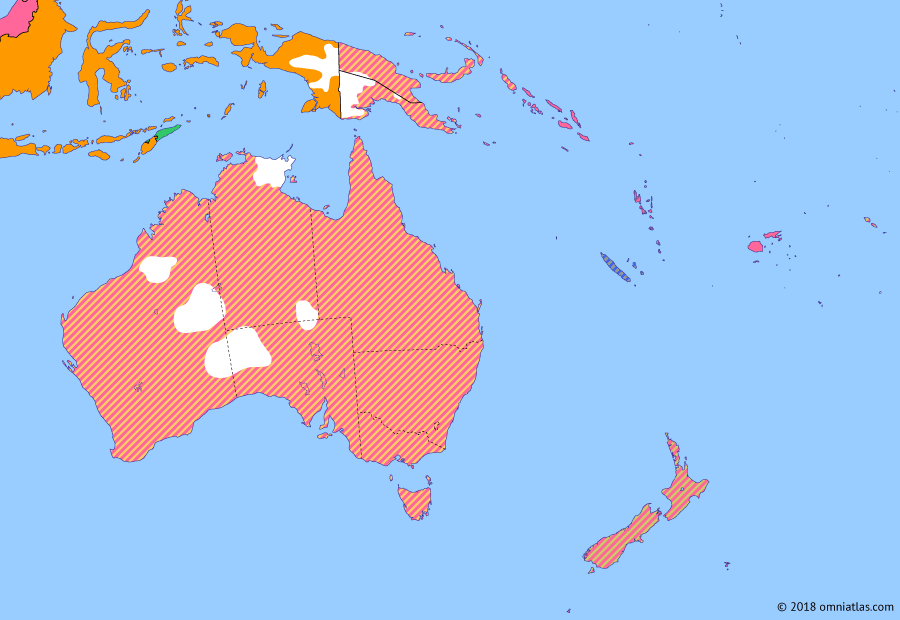Australasia 1940: World War II and the Fall of France
10 July 1940
10 Jul 1940
World War II and the Fall of France
1 Jan 1901 Federation of Australia
27 Sep 1906 Consolidation of the Dutch East Indies
4 Aug 1914 Outbreak of the Great War
24 Sep 1914 Conquest of the German Pacific
29 Jun 1919 Treaty of Versailles
18 Oct 1928 League of Nations Mandates
11 Dec 1931 Statute of Westminster
31 Dec 1936 Exploration of the New Guinea Highlands
10 Jul 1940 World War II and the Fall of France
In September 1939 a resurgent Germany invaded Poland, triggering war with Britain and France. Australia and New Zealand immediately joined in support of Britain. However this Second World War was to prove to be even more daunting than the first, with Germany conquering France and most of Western Europe in the first ten months.
